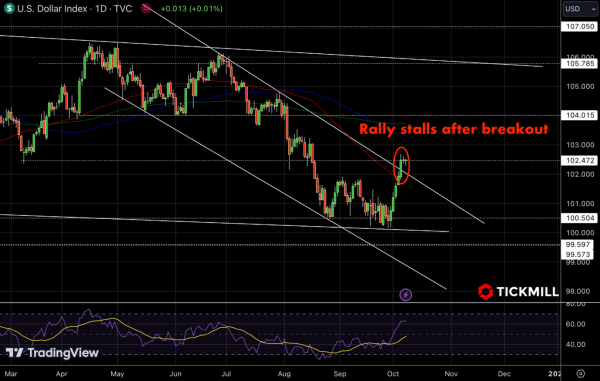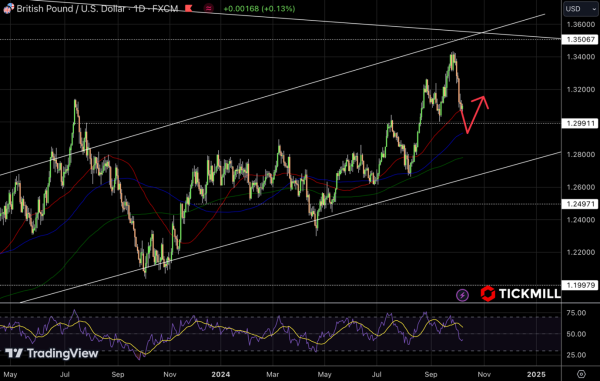US Dollar Price Action Muted as Markets Await US CPI Report
The greenback is striving to regain traction after modest declines over the past two sessions. The rally apparently stalls after bullish breakout of the major descending channel and testing of the horizontal 102.50 level as market participants remain cautious ahead of the upcoming US CPI report, which can easily sway bullish sentiment on the USD in the opposite direction:

Despite the global risk-off environment, US equity futures suggest a positive opening. This resilience may be attributed to strong domestic economic indicators and corporate earnings optimism. Investors seem to be balancing global uncertainties with confidence in the US economy's ability to withstand external shocks.
The significant drop in Chinese equities after return from the holiday has injected a surge of risk-off sentiment into global markets. European stocks opened lower, mirroring concerns about global growth prospects and escalating tensions in the Middle East. While European equities have trimmed some losses, they remain in negative territory.
Today's economic calendar is relatively sparse, with the Goods Trade Balance and the Economic Optimism Index not expected to significantly sway markets. The Goods and Services Trade Balance for August revealed a deficit of $70.4 billion, narrowing from the previous month's $78.8 billion and slightly better than the anticipated $70.6 billion. This improvement suggests a modest recovery in trade dynamics but is unlikely to alter the broader market sentiment.
Market participants will be closely monitoring speeches from Federal Reserve Bank of Atlanta President Raphael Bostic and Federal Reserve Vice Chair Philip Jefferson. Their comments could provide valuable insights into the Federal Reserve's policy trajectory, especially amid ongoing inflationary pressures and global economic uncertainties.
Contrary to some earlier expectations, the market is not widely anticipating a rate cut at the Federal Reserve's upcoming November meeting. Interest rate derivatives in the US indicate that the majority of market participants expect the Fed to maintain the current interest rate levels, with a small minority pricing in the possibility of a rate hike rather than a cut. The notion of a 25 basis point rate cut has been largely dismissed, given the resilient US economic data and persistent inflation.
The US 10-year Treasury yield has risen to approximately 4.05%, the highest level since mid-August. This upward movement reflects market adjustments to the Fed's potential policy path and underscores investor concerns about inflation and fiscal deficits.
The Pound Sterling is outperforming major peers today, but the downside trend remains intact as the major support level hasn’t been tested yet:

Market participants anticipate that the BoE may adopt a more cautious approach to easing monetary policy compared to its counterparts. Unlike the ECB and the Federal Reserve, which are expected to maintain or possibly tighten their policy stances, the BoE is projected to hold off on aggressive rate cuts in the near term. This expectation is grounded in the UK's persistent inflationary pressures, particularly in the services sector.
In August, the UK's annual services inflation accelerated to 5.6% from 5.2% in July, driven by robust wage growth. Sticky inflation suggests that the BoE might keep interest rates elevated longer to ensure price stability. Governor Andrew Bailey's recent comments indicate a commitment to combating inflation, even if it means delaying rate cuts.
Investors are keenly awaiting the UK's monthly Gross Domestic Product and industrial production data for August, scheduled for release on Friday. These figures will offer fresh insights into the economy's health and could influence the BoE's policy decisions moving forward.